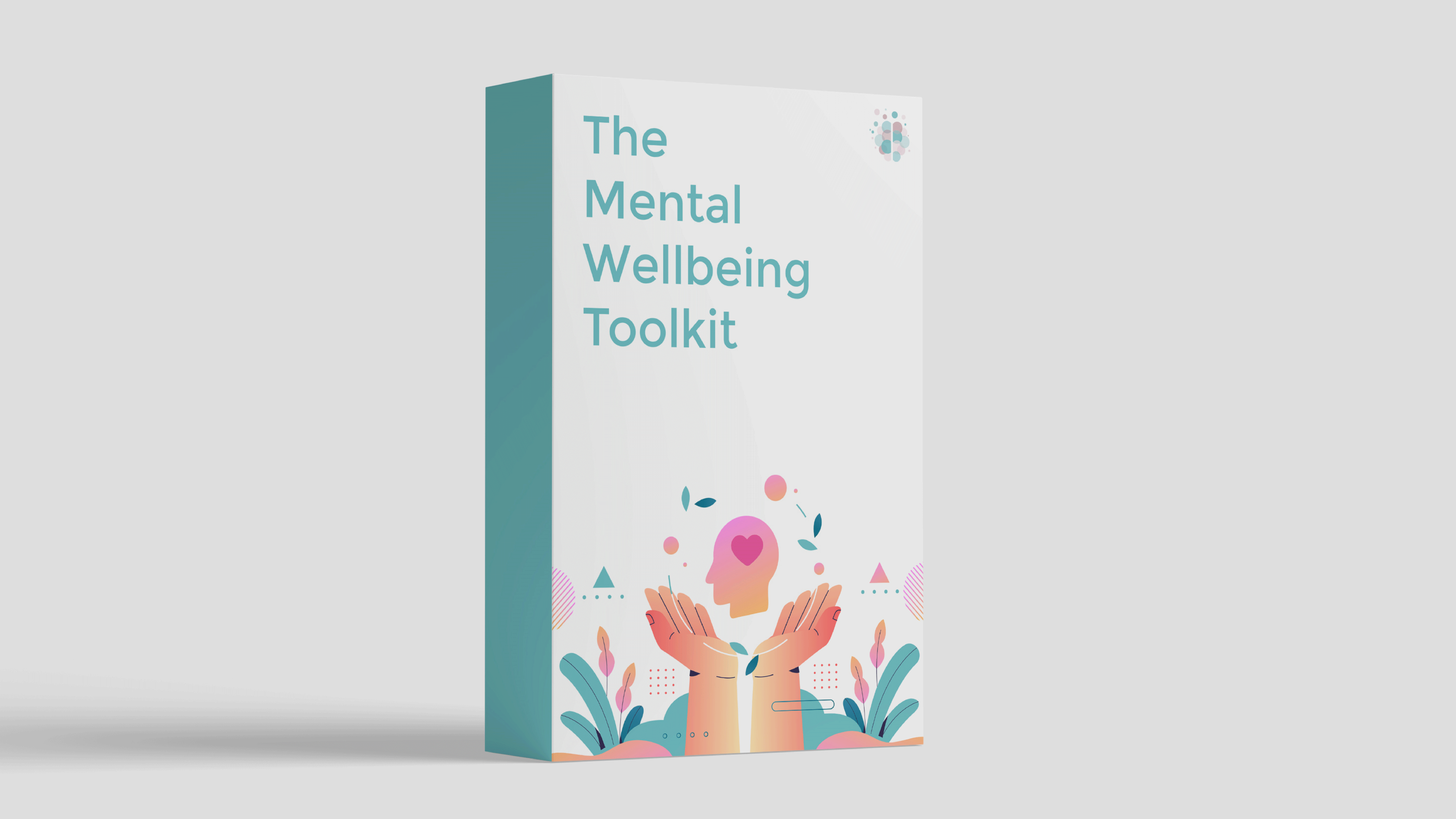Wondering how to deal with intrusive thoughts? First, let's look into the exact nature of thoughts themselves.
It’s safe to say that every thought you have ever had has never been a straight fact. Thoughts are subject to our situation, our viewpoint, and also nonsense. When you have a positive thought, for example, ‘I’m super excited for my birthday next week’, you may feel temporarily excited or joyous, but the moment will soon pass and before long, you’re onto your next thought.
So, why do we hold on to some thoughts more than others?
Thoughts can produce positive, neutral or negative reactions, and these tend to come from the inner meanings we believe to be true about our self or the world. Thoughts often stick around due to you finding the thought unacceptable in some way.
In The Mental Wellbeing Toolkit, we refer to intrusive thoughts as ‘threat imagery’.
Most people, at some point in their lives, will have had a random thought like 'What if I were to jump from this bridge?' or 'What if I pushed this person over?'
Intrusive thoughts are words or mental images that focus on scary or unwanted situations – threats.
It’s your brain alerting you to possible dangers in the environment. Sometimes, this can be helpful. Whilst you may be able to quickly dismiss some unhelpful thoughts without more than a ‘Hmm, I wonder where that came from’, in other contexts, intrusive thoughts can be particularly unpleasant and disturbing, and cause significant distress. You fixate on them.
And that's how they get stuck.
Types of Intrusive Thoughts
Common types of intrusive thoughts include:
- Thoughts towards hurting yourself or someone else (including fear of purposefully or accidently harming yourself or a loved one that may result in distrust around sharp objects or things that may inflict harm)
- Sexual thoughts (including fear of being sexually attracted to infants, members of family or regarding sexual orientation)
Thoughts may appear violent and may not reflect your true intention of not wanting to act upon such thoughts.
However, it may worry you that deep down there must be a reason why you’re thinking this or that maybe you do actually want to act on them.
So, how to deal with intrusive thoughts?
Know That Thoughts Are Not Facts
It's crucial to acknowledge that these thoughts, whilst uncomfortable, distressing or upsetting, are just that. Thoughts. They are not facts. Try not to assign importance to them. They will come and go, just like every other thought you ever had. Heard of acceptance and commitment therapy (ACT)? Learn more about how to use ACT techniques to detach yourself from thoughts in The Mental Wellbeing Toolkit.
Remember: There’s A Difference Between Thoughts and Intent
Just because someone has thoughts about something, it doesn’t mean they’ll act on them. It's important to recognize that thoughts are not actions. They are cognitive events, and they do not reflect a person's true desires, values, or intentions.
Develop Your Distress Tolerance Skills
If you feel able (ensuring you’re in a safe environment) you can learn to sit with distress.
Instead of fearing and fighting uncomfortable emotions and desperately trying to get rid of them, we can learn to accept that the emotion will pass and that we can cope. This will involve allowing the thought in and sitting with it, without taking action to combat the distress. Develop your distress tolerance skills with these four actions:
- Calling it out. What is the emotion? Can I describe it? Where do I feel it in my body?
- Being non-judgmental. Try not to associate the triggered emotion as ‘good or bad’ or ‘right or wrong’. Simply let it be. It is neither of those things. It is what it is.
- Using visualisation to symbolize thoughts passing. An example might be to imagine your thoughts are clouds, floating by one by one, and you are the observer, just observing. Let them come and go as if you're lying on the grass looking up at the clouds moving in the sky.
- Remembering you’re always in the now. Spend a few moments observing your surroundings, refocusing yourself back into the now. A breathing exercise or distraction technique may help with this.
A Toolkit to Help You Reduce Anxiety
Research shows that self-help materials are often enough for people to overcome mild to moderate mental health difficulties without professional support.
Our self-guided program includes tools from CBT, DBT, ACT and more, so you can discover what works best for you. Check out The Mental Wellbeing Toolkit today – it's "like 10 therapy sessions in one."

About Brittany
Brittany is a Psychology and Counselling graduate currently working as a Psychological Wellbeing Practitioner in the NHS. She has a background within psychological theory, therapeutic counselling, CBT and knowledge of associated psychological difficulties, with experience and expertise in anxiety disorders."Encouraging people to learn to live a better quality of life and importantly, not let their mental health difficulties define them is paramount to me."



